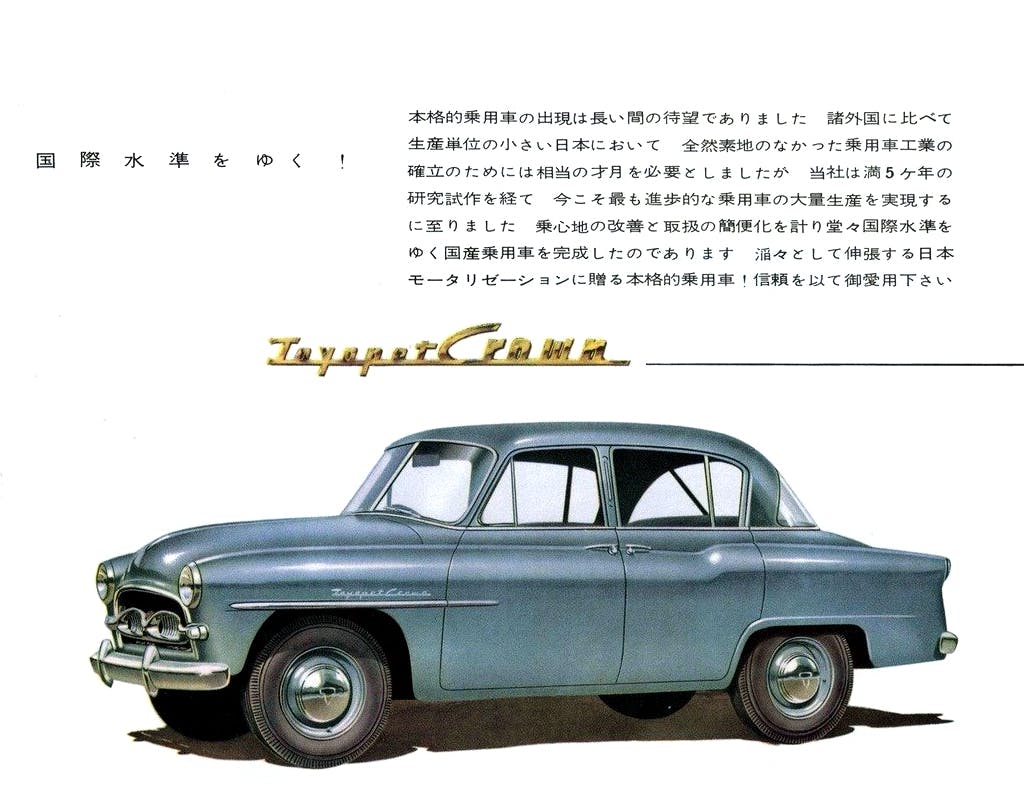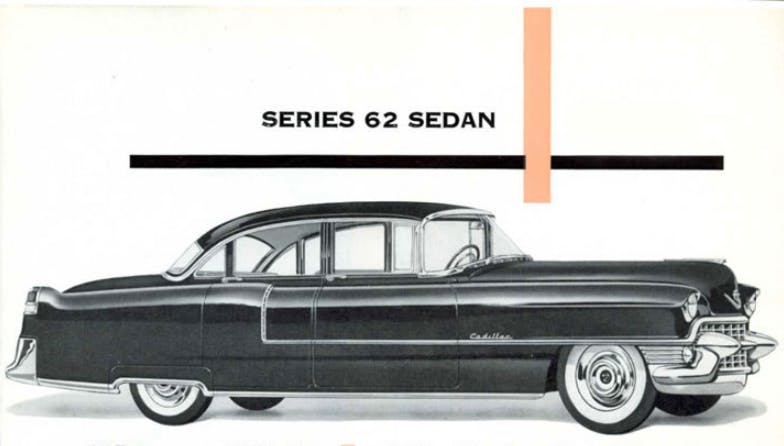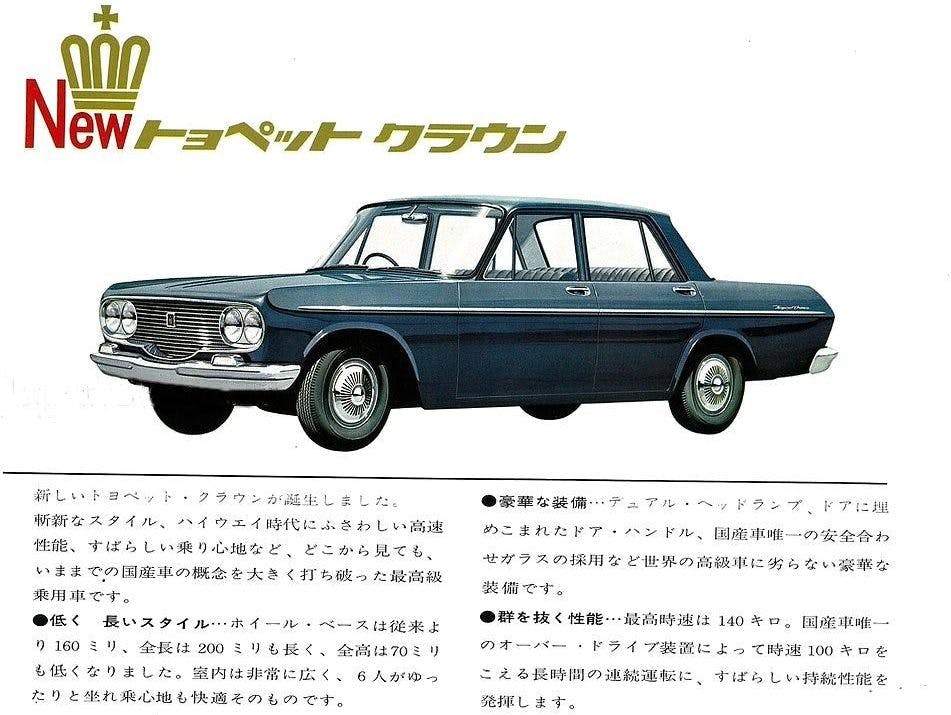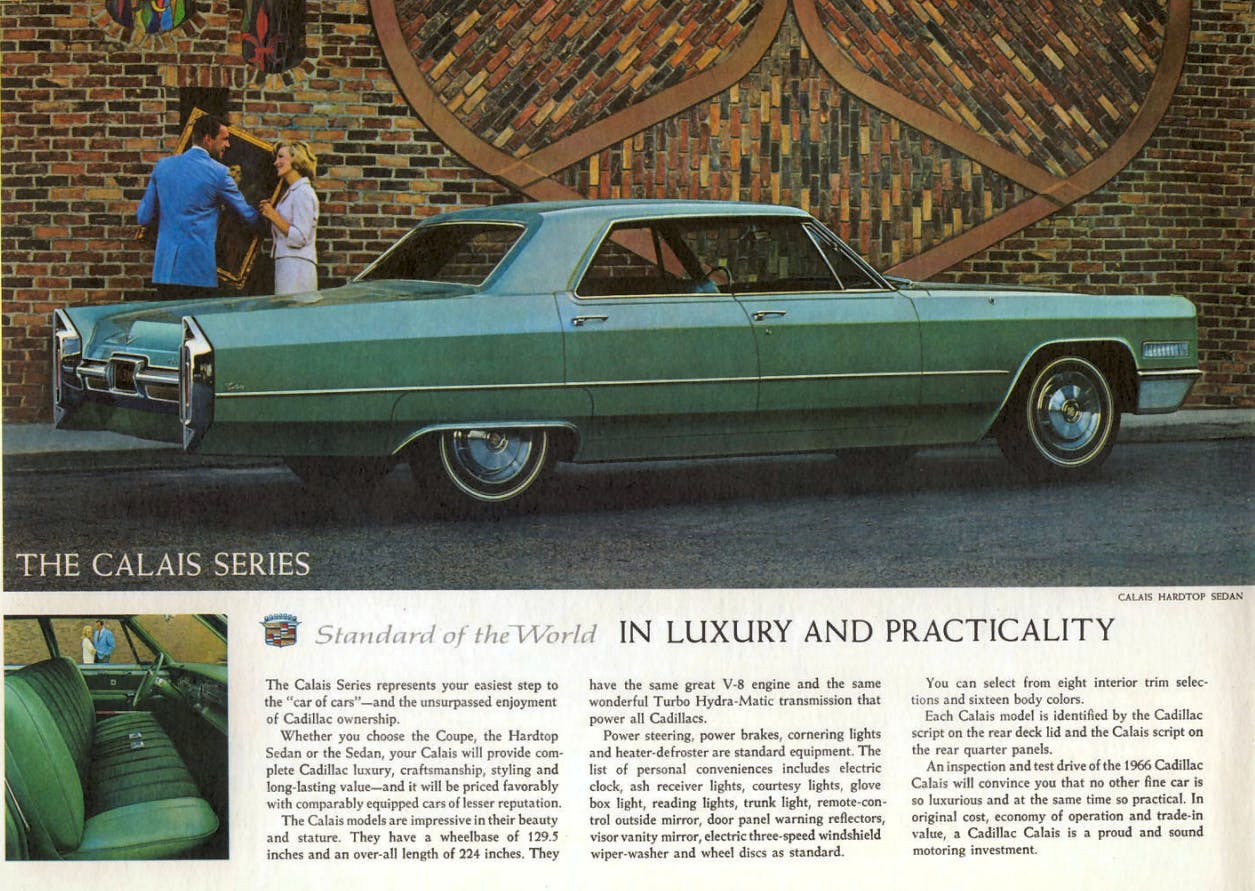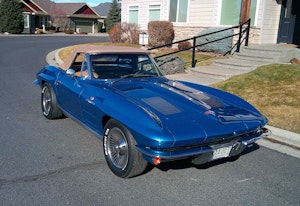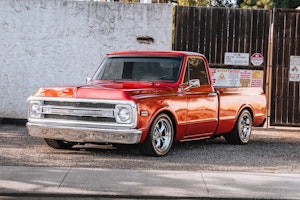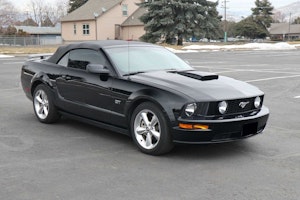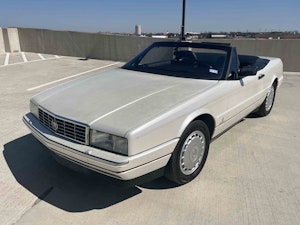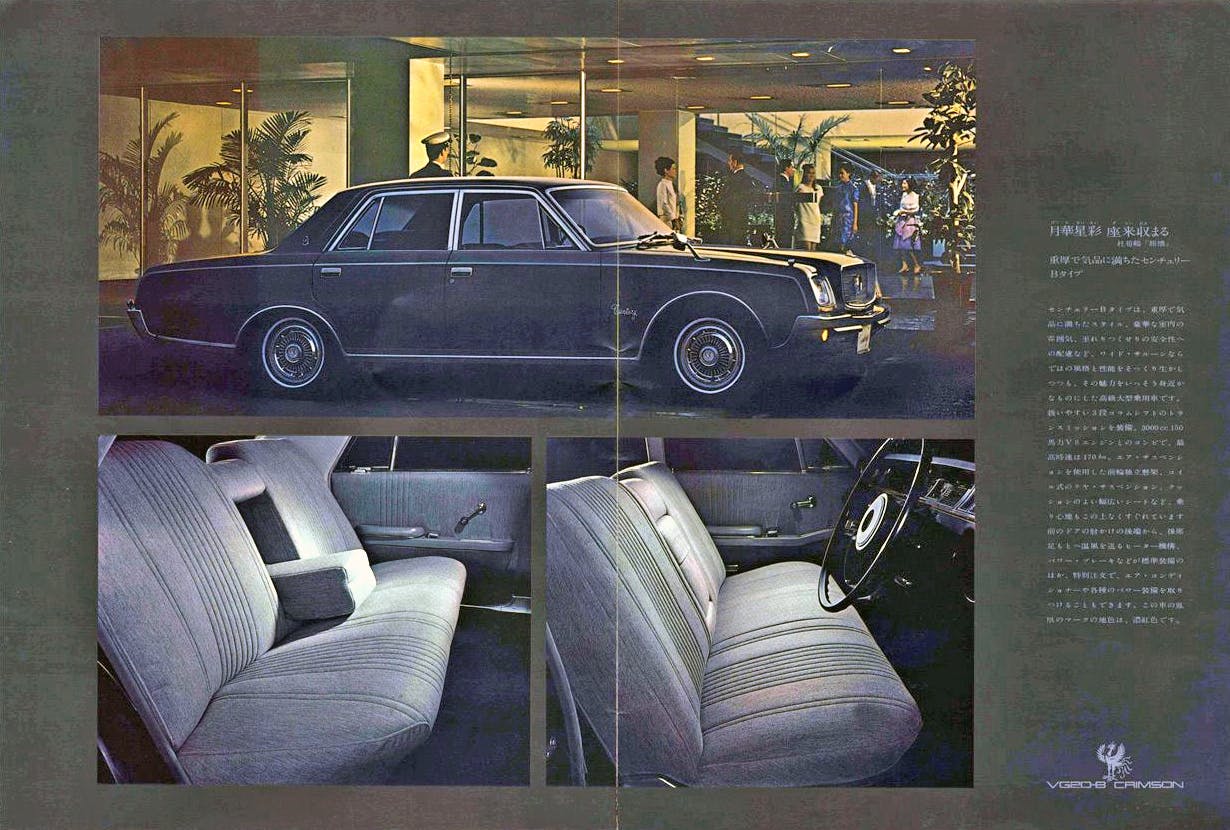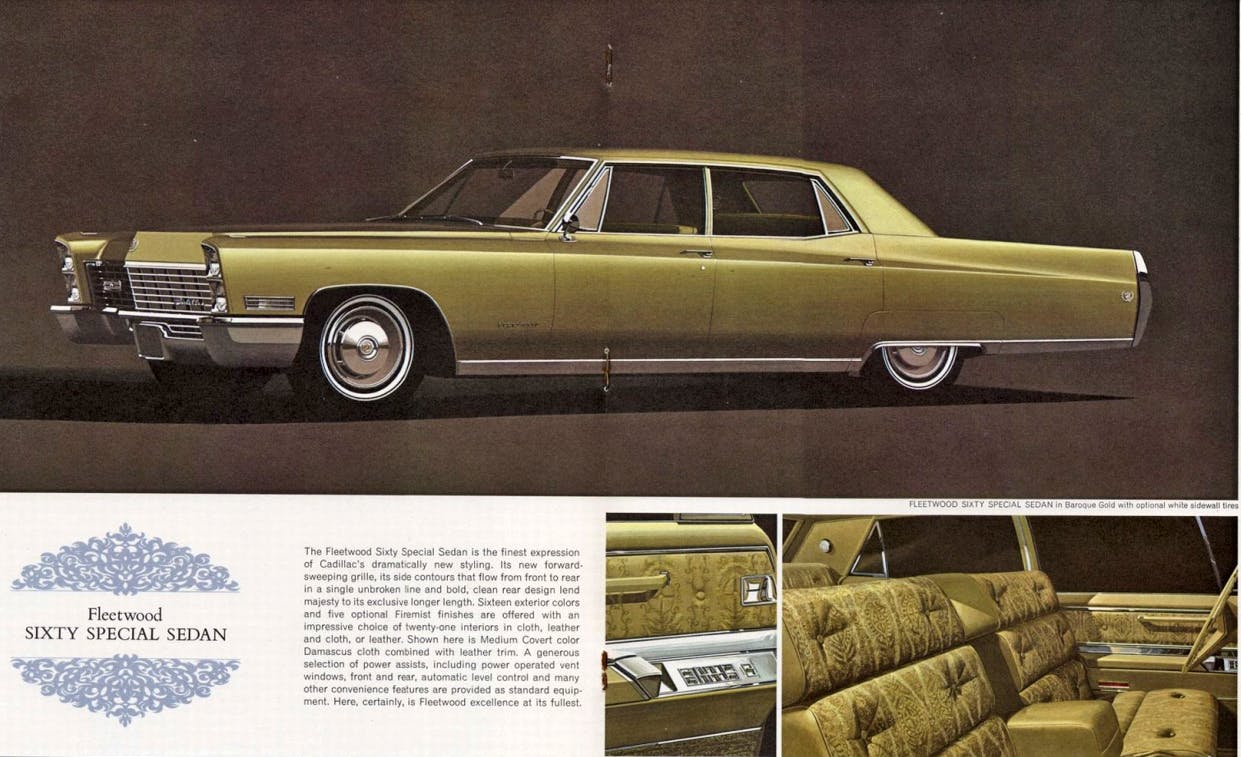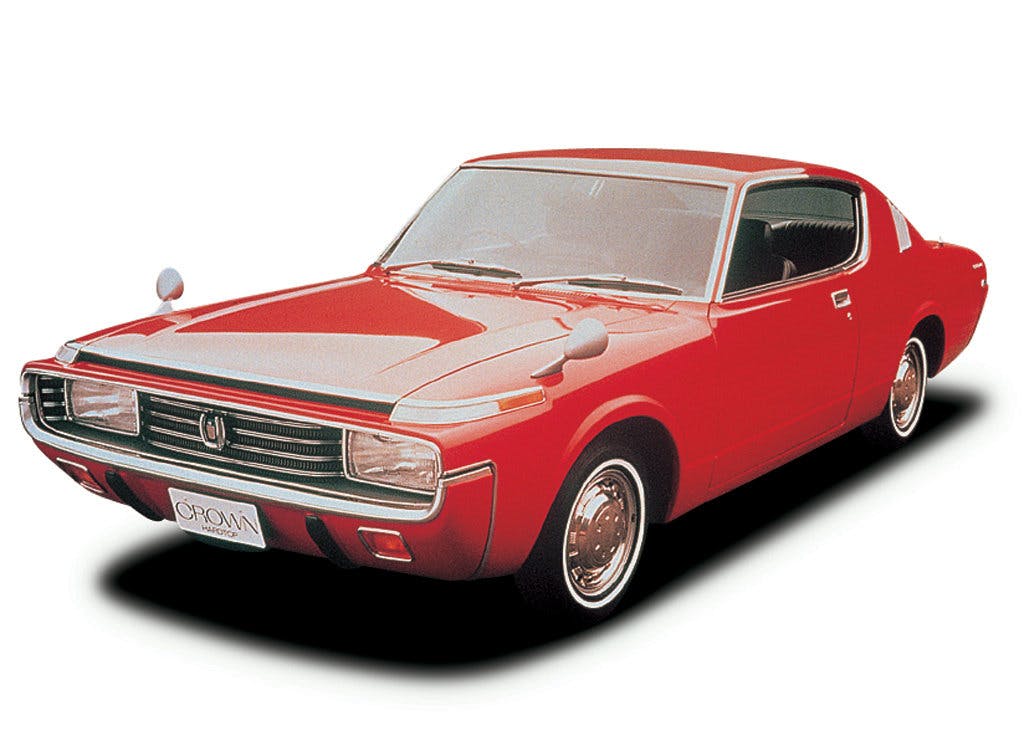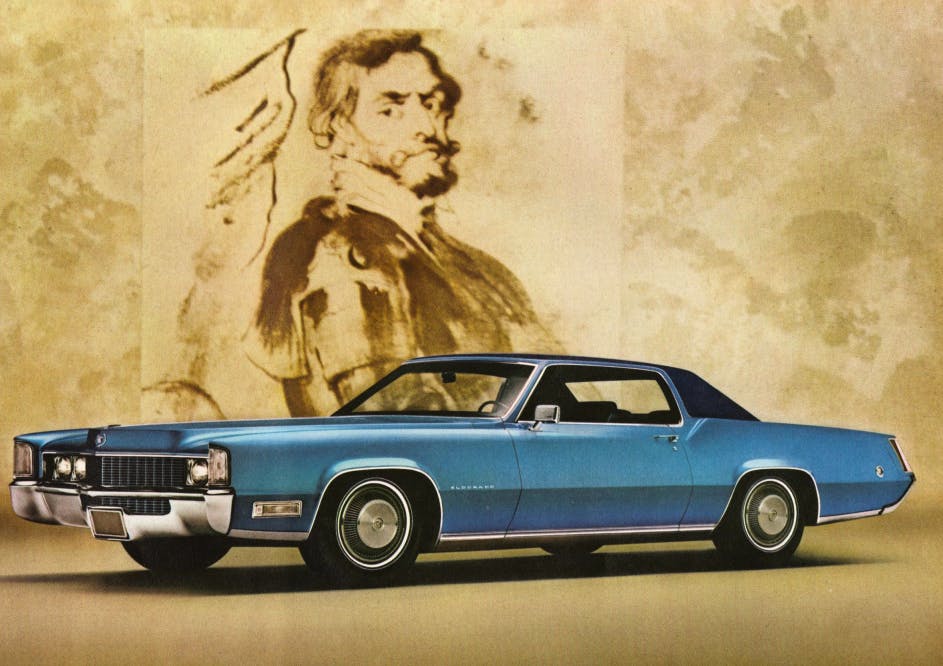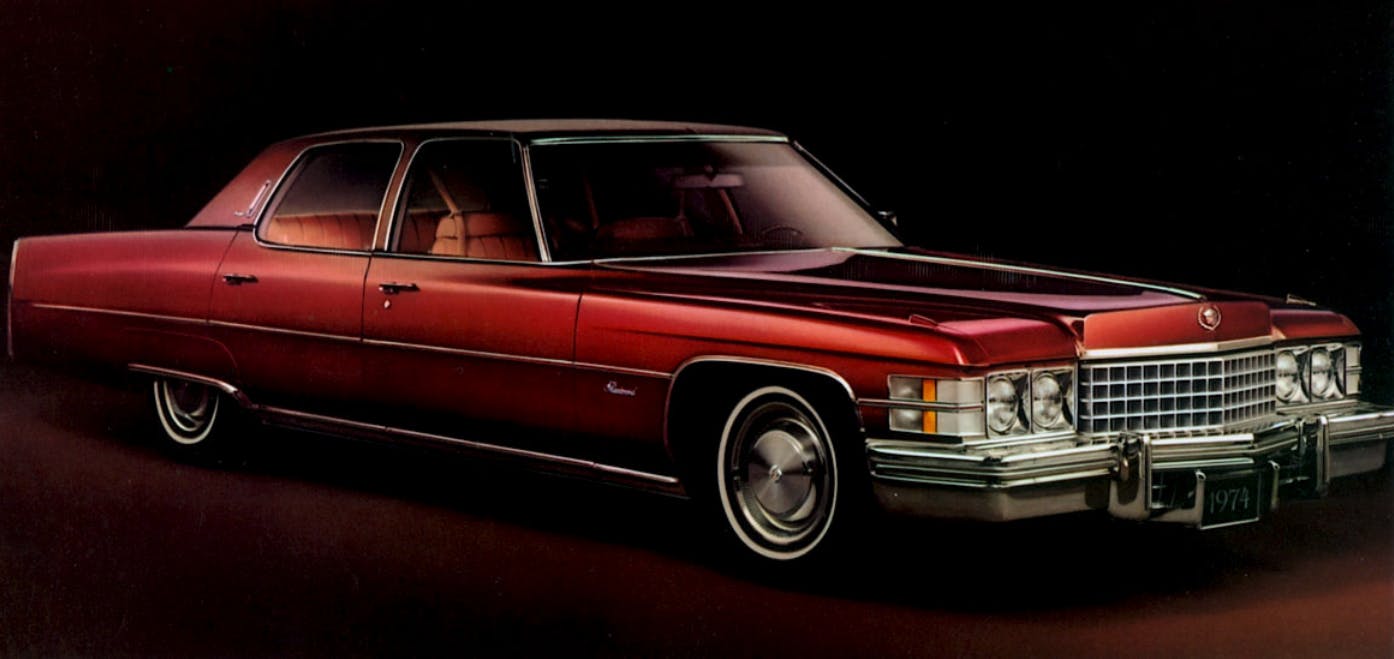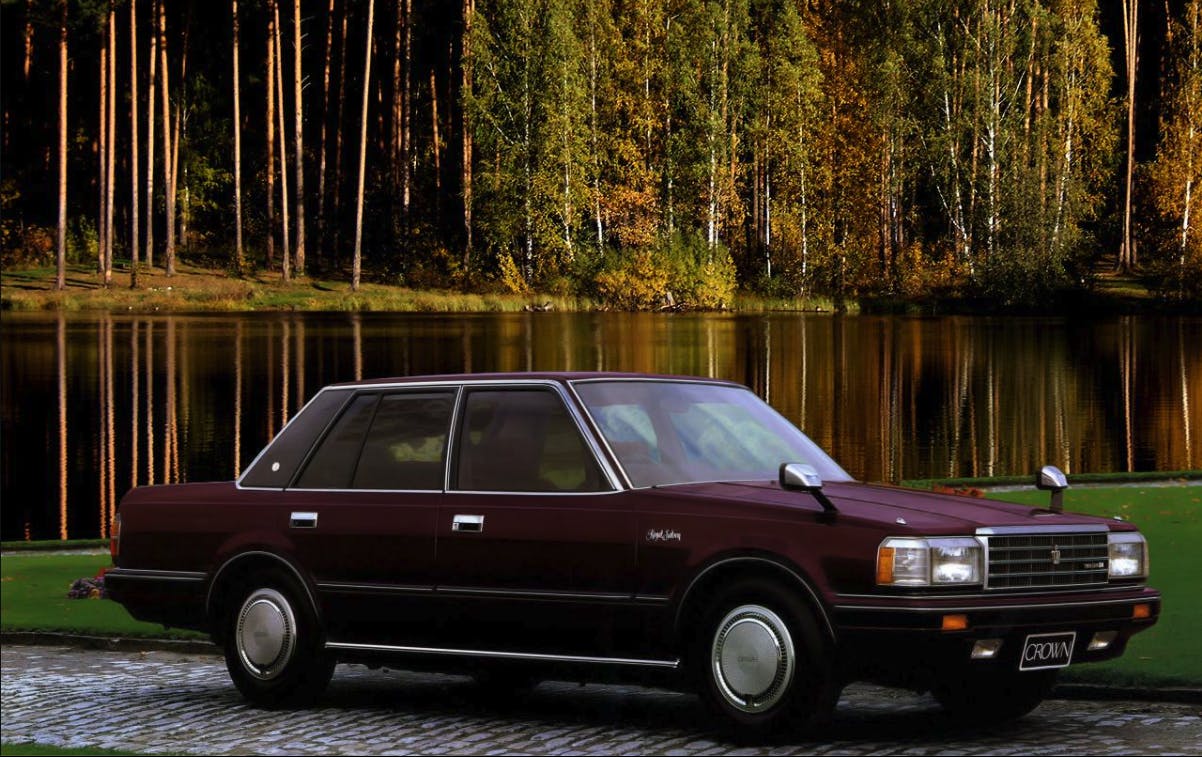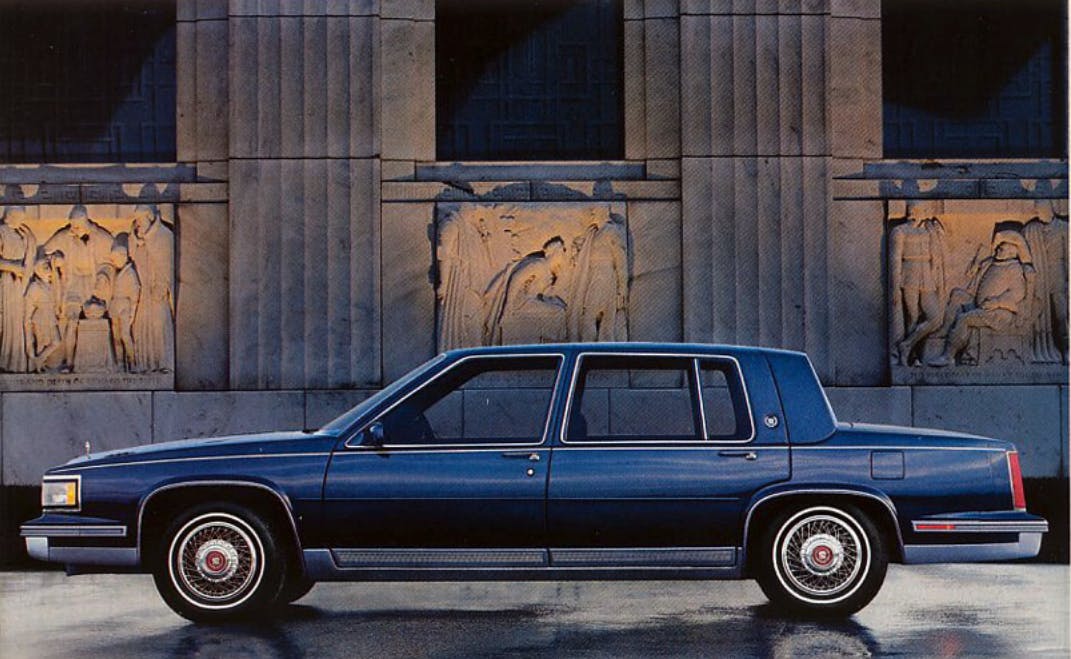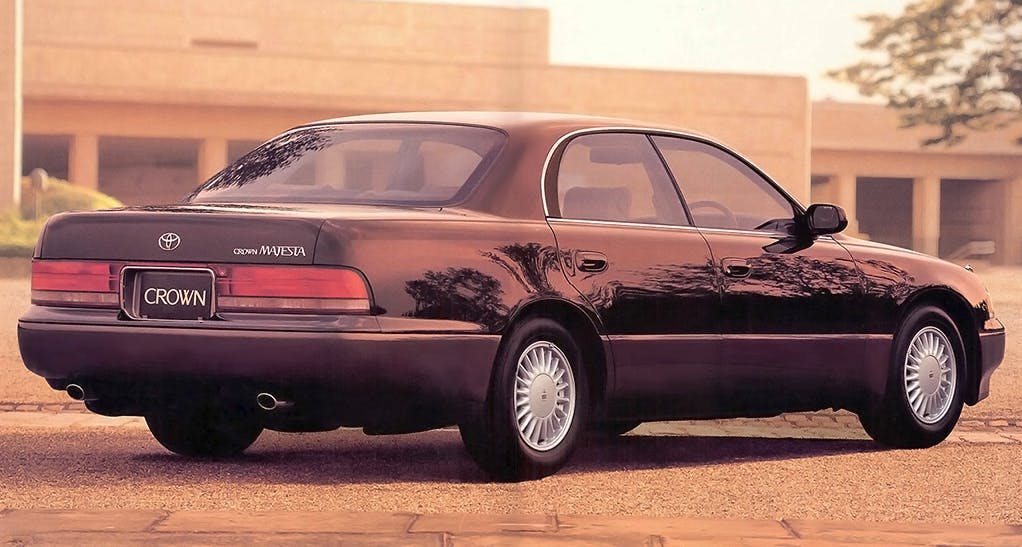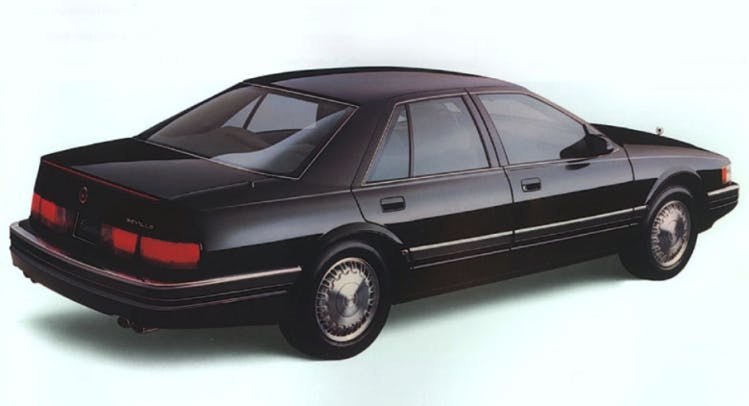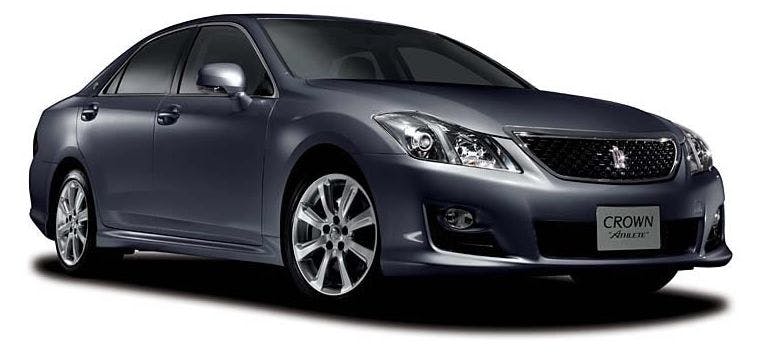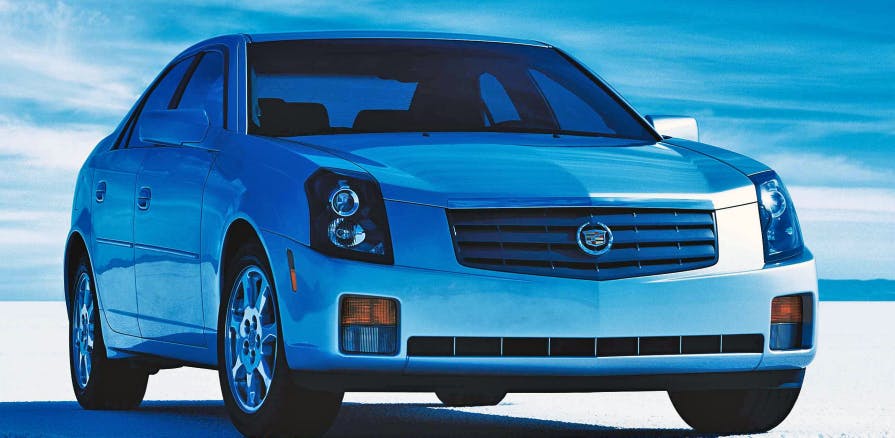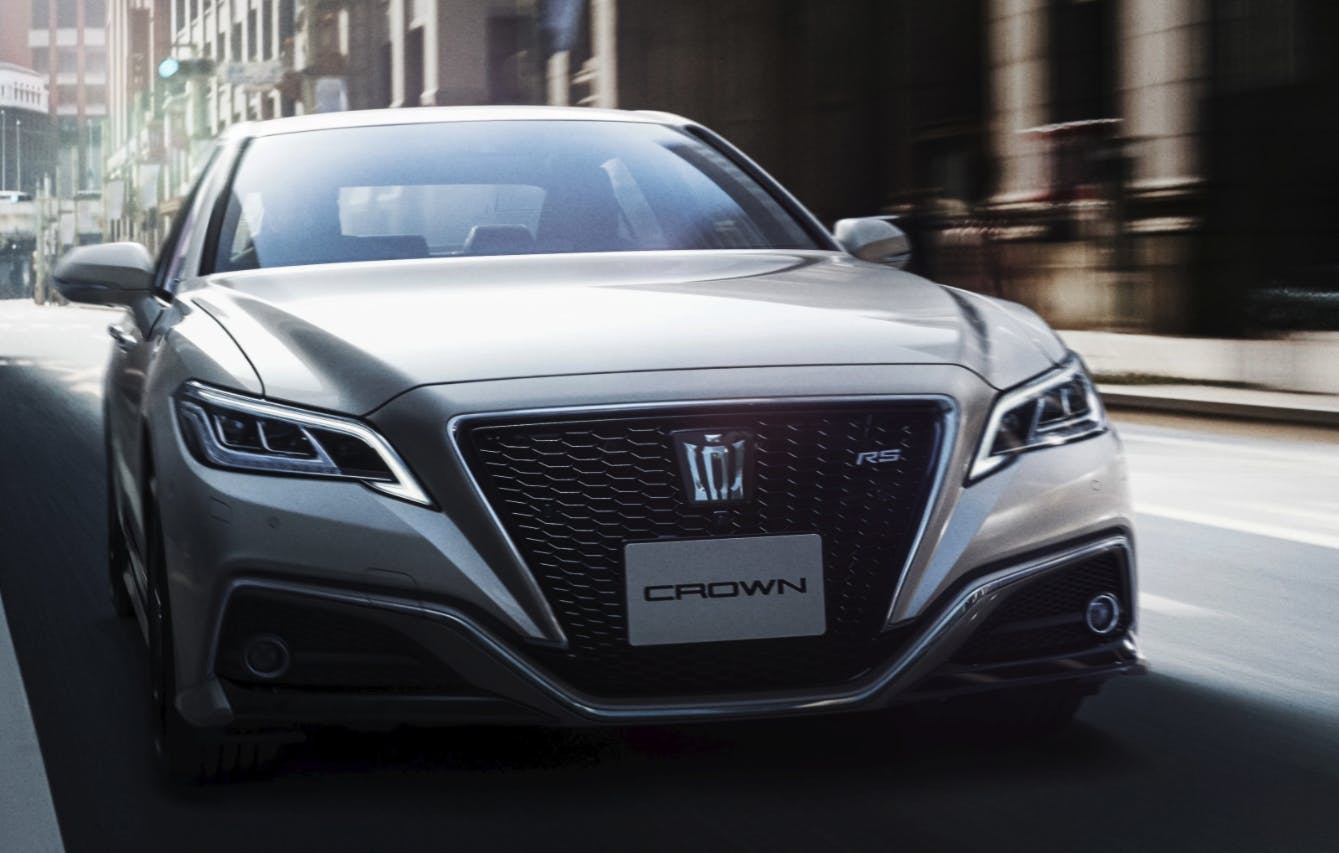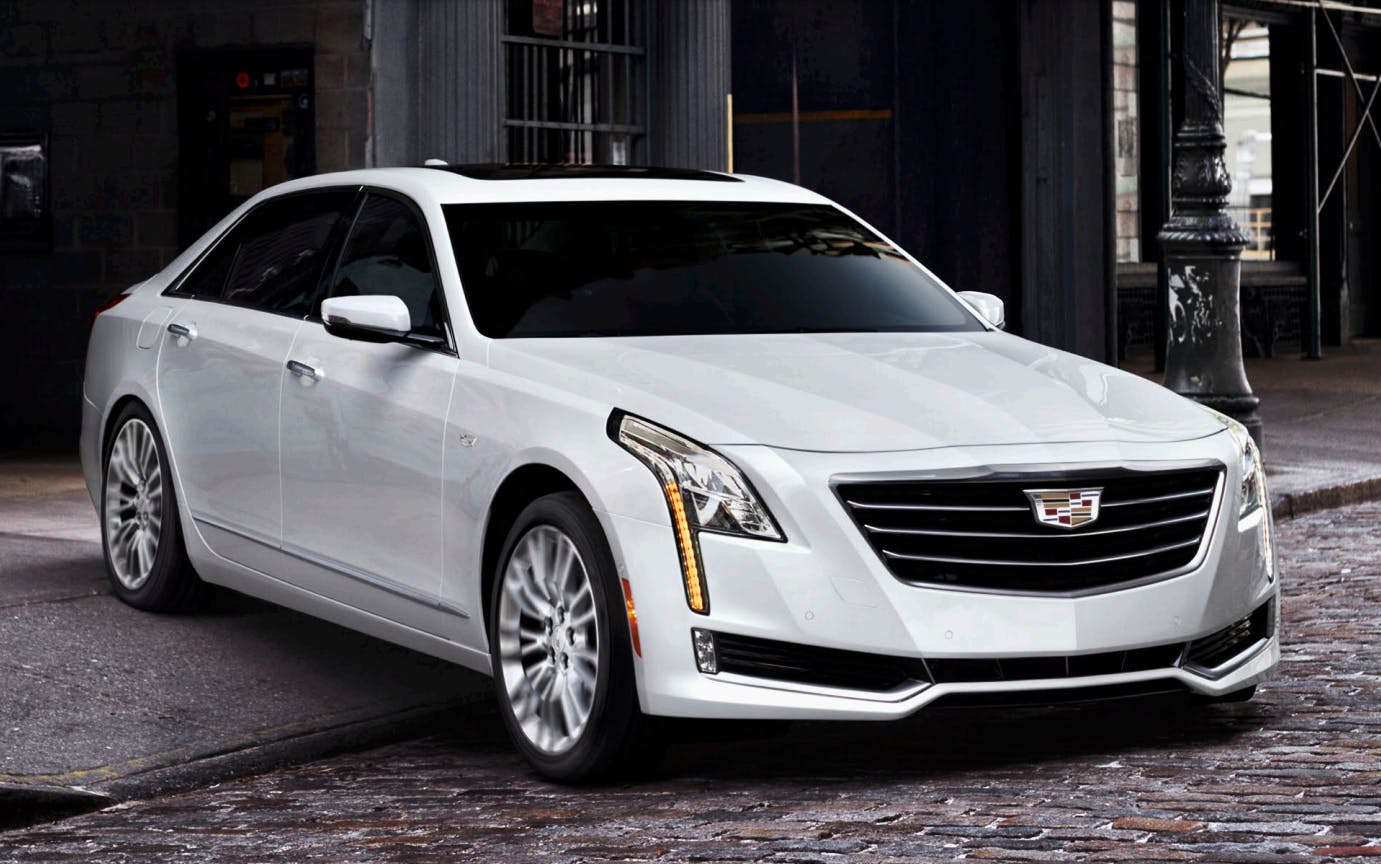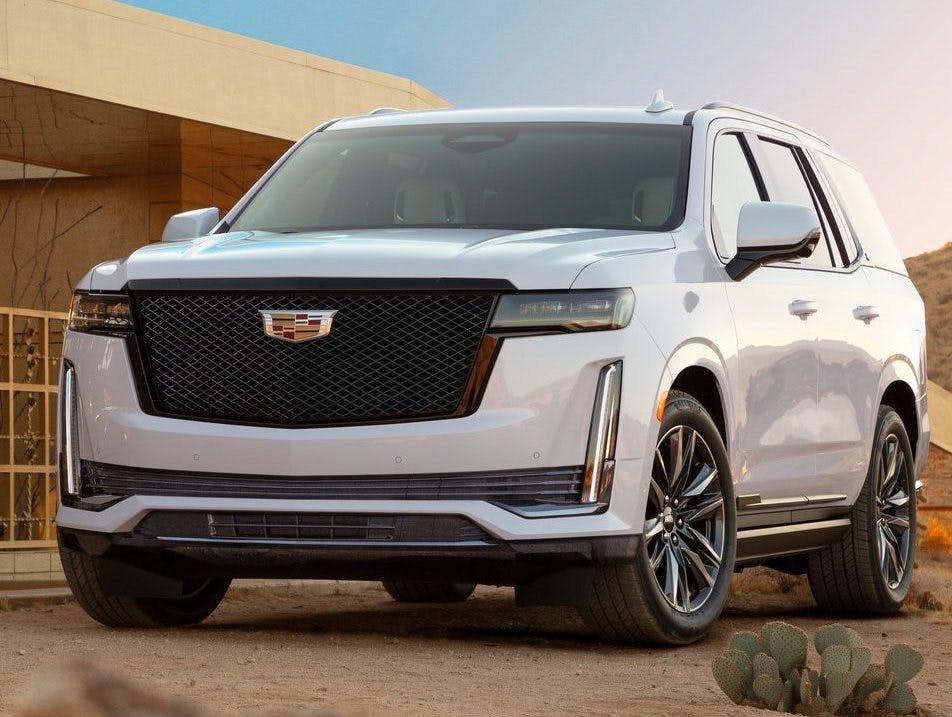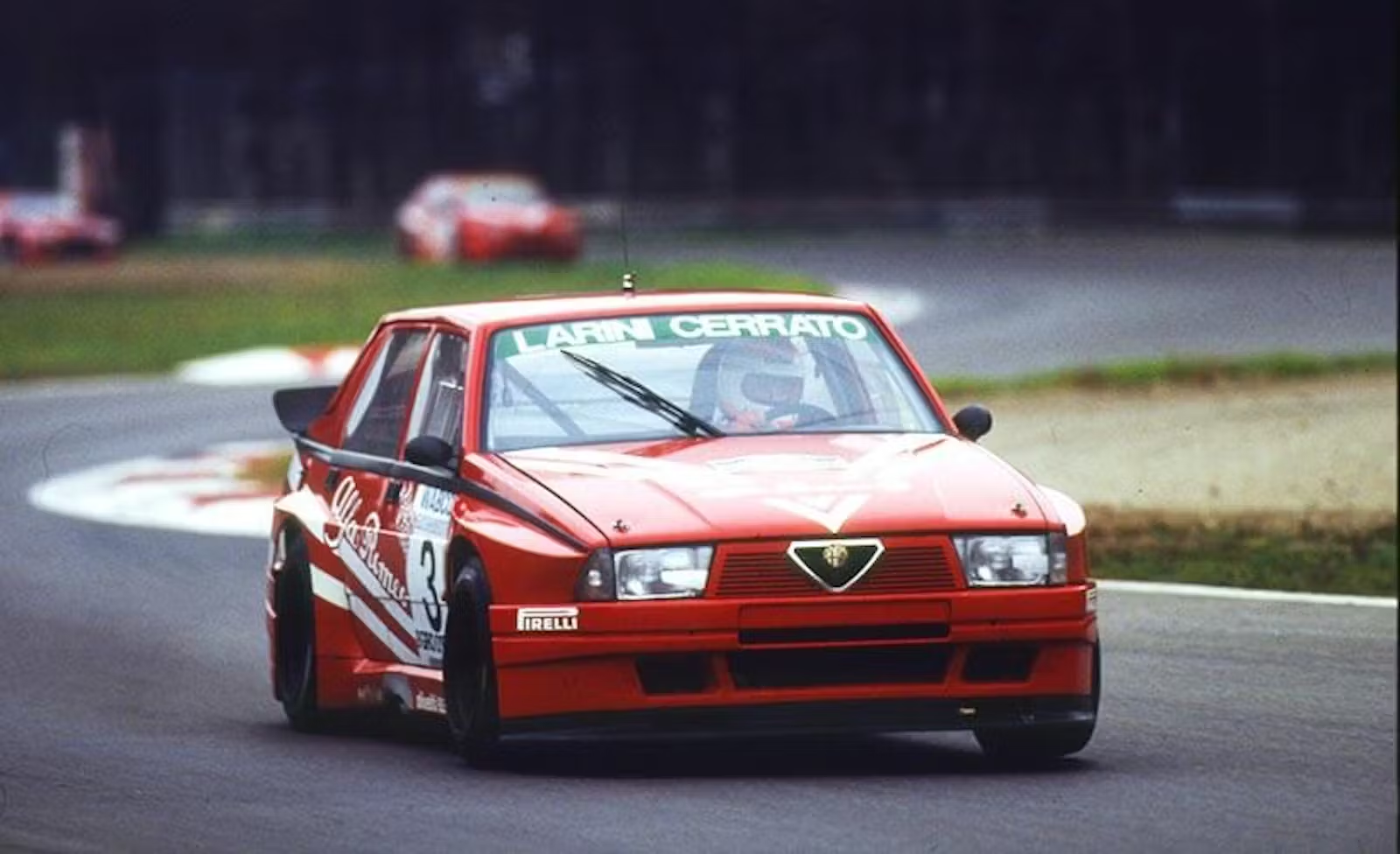Media | Articles
These 10 Toyota Crowns had luxurious Cadillac counterparts
If it wasn’t for the Lexus brand in the 1990s, would anyone in North America know that Toyota’s expertise building luxury sedan is on par with Chevrolet’s mastery of the small-block V-8 engine? Perhaps that’s just hyperbole, but what is now the world’s second-largest automaker once envisioned for itself something not unlike Alfred P. Sloan’s GM branding guidelines. What started with the Toyota Crown in 1955 soon snowballed into something of a global phenomenon, branching off into Coronas, Cressidas, Soarers, Celsiors, and Lexus vehicles. With such a diverse history in tow, it seems fair to look back on the Toyota Crown as a kind of Japanese expression of the same luxury ethos that characterized Cadillacs from the 1950s to the 1990s. So let’s look a little closer at the parallels.
A notice to readers: Comments on new Hagerty articles have been disabled due to technical issues since July 29th. Don’t worry, the comments are coming back soon, and when they do, we’ll have a contest or giveaway to reward our readers for their patience. Never stop driving! — Jack Baruth
1955–62 Toyopet Crown: The Nipponese C-body
It may seem laughable to some, but considering the Japanese economy in 1955 wasn’t a juggernaut just yet, the first-generation 1955 Toyopet Crown was indeed an upmarket, premium, and Cadillac-like upgrade to the fleet-based Toyopet Master. Just look at those suicide doors!
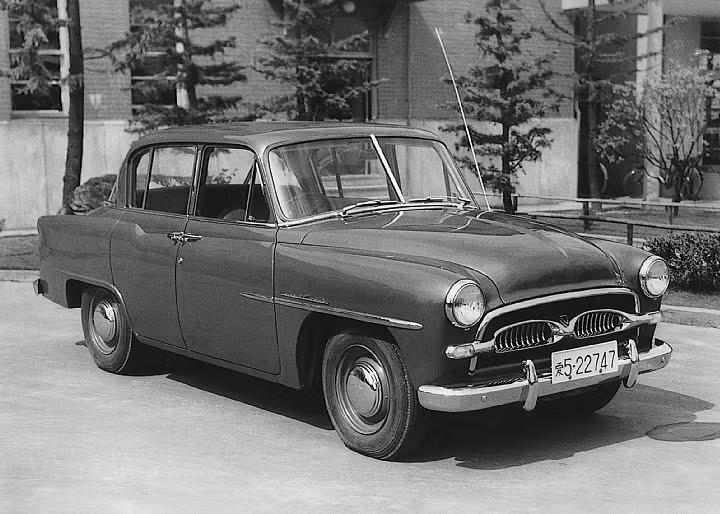
While the Master was mostly intended for use in taxi service (think Chevrolet’s “One-Fifty” sedan) the Crown also included wraparound rear glass and unique fascias with ornate chrome detailing. The double wishbone front suspension was rather outstanding for the era, while the ritzy Deluxe trim level came with standard whitewall tires, a heater and a radio. The changes were significant from the fleet-spec Master, so it’s a fair statement to say the original Crown was the Japanese equivalent of the GM C-body Cadillac Series 62. High praise indeed, and more fitting because Toyota introduced the mid-level Corona in 1957 that was akin to an Oldsmobile 98 or the Buick Roadmaster of the era.
1962–67 Toyopet Crown: A Far East Calais
Marketplace
Buy and sell classics with confidence
The aforementioned Alfred Sloan analogy wasn’t used in vain, as the second-generation Crown grew larger with far more upscale proportioning. (The Corona was slotted right below it.) While multiple body styles were available, the naming traditions remained: Masterline for commercial vehicles and Crown, Crown Deluxe and Crown Super Deluxe for passenger sedans and wagons. There was now a 2-speed automatic available, named “Toyoglide” as an insult hat-tip to General Motor’s Powerglide. An optional, mid-cycle upgrade included a six cylinder engine that would eventually gain fame with the Toyota 2000GT. While Toyota was decades away from competing with Cadillac directly, there’s no doubt the Crown was an aspirational vehicle. Even better, the Crown S was tuned for sporting intentions, a kind of V-series Cadillac decades before such a thing existed. Perhaps the Crown S was a Pontiac Bonneville with Tri-Power induction, while the regular Crown was a Cadillac Calais?
Crown Eight, Century: Fleetwood fine rice wine
The larger, V-8 powered Crown Eight debuted in 1964, designed for the Japanese elite that normally drove foreign vehicles of appropriate size and prestige. Which is great, but things were getting even better for flagship Toyota fans. It’s been said that 1968 was the year Japan became the second-largest economy in the world, so it should come as no surprise that Toyota took what made the Crown Eight special and turned it up several notches. The new vehicle had a completely different body and a new name: Century. There’s little doubt that the flagship Toyota Century is a Japanese reimagination of the Cadillac Fleetwood 60 Special, while limousine conversions were the equivalent of Cadillac’s top-tier Fleetwood Series 75 limousines. But we’re diverging too far from our subject matter, so let’s get back to the Toyota Crown …
1967–71 Crown Hardtop Coupe: Small-scale personal luxury
While previous models were separated into Crown (retail) and Masterline (fleet) versions, all third-generation Toyotas from this chassis were called Toyota Crowns. That said, the Crowns become more Cadillac-like with the introduction of the top level Super Saloon trim level and—most relevant to the discussion at hand—a two door, pillarless hardtop coupe.
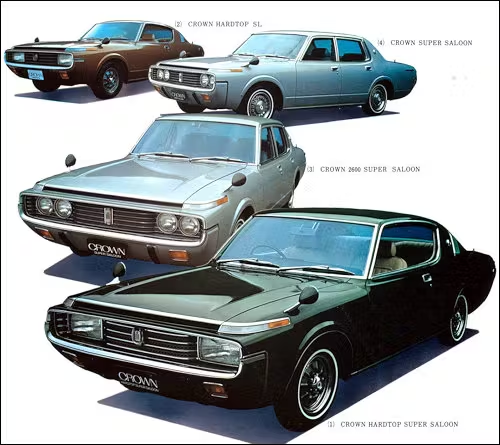
The Super Saloon only further cements the Crown’s ability to be DeVille for some, and Fleetwood for others. And the unique coupe is clearly the Japanese version of Cadillac’s Eldorado personal luxury coupe, albeit suited to markets outside of North America.
1971–83 Crown Saloons: d’Elegance and Broughams abound
More of the same branding exercises happened with the Crown in its fourth, fifth, and sixth generations, as there was now a Royal Saloon trim level that borrowed engineering from the Century flagship sedan. Right below it was the Super Saloon, Super Deluxe and Deluxe—not unlike Cadillac’s sedan offerings. Witness the Cadillac Calais, DeVille, DeVille d’Elegance, Fleetwood, Fleetwood Brougham, Fleetwood Brougham d’Elegance, and the top shelf Fleetwood Talisman. Perhaps the top-line Royal Saloon is on par with the Fleetwood Brougham d’Elegance, as the Fleetwood Talisman was on par with the Toyota Century? (This is some fancy word salad!)
1983–01 Crown Saloons: High Technology by any other name
Things get dicey once the 1980s came in full swing, mostly because Cadillac split its market into downsized, front-wheel-drive luxury vehicles along with traditional rear-wheel drive Fleetwood Broughams. Toyota’s Crown models stuck with rear-wheel drive in the seventh through the eleventh generation and surprisingly remained loyal to the option of pillar-less hardtops through the tenth generation.
Nicer Crowns sported four-wheel independent suspensions on par with the more cutting edge, front-wheel drive Cadillac DeVilles of the era. While Cadillac’s HT-series engines get a bad rap, GM’s top-level brand took advantage of the latest in electronically controlled powertrains and safety features. Which is not unlike Toyota, which endowed the high-end Crown models with electronically controlled gearboxes, anti-lock brakes, semi-active suspensions, and a litany of electronic interior upgrades worthy of a Fleetwood 75 limousine. But the best comparison includes the Crown’s seventh generation; the top level Royal Saloon was available in a longer wheelbase, just like a Cadillac Fleetwood Sixty Special. (Both pictured above.) The Super Saloon Extra, and Super Select were pillarless hardtops on a shorter wheelbase (like a Cadillac Fleetwood). The cheaper, pillared Crowns were the Royal Saloon sedan and the Super Saloon Extra sedan (think Cadillac DeVille).
1991–18 Crown Majesta: The RWD Seville
This one is a stretch, but worth a punt: The Cadillac Seville had a great name, flagship pricing, class-leading technology from its first fuel-injected motor (1975) to magnetic dampers (2002), and looked far different than the General Motors products on which they were based. It’s a shame that most were front-wheel-drive, but if you combined all that glittered in the Seville/STS history, you’d get the American equivalent of Toyota’s Crown Majesta: a bespoke, flagship sedan for those not interested in the Toyota Century’s old world stodginess. The Crown Majesta was true-to-luxury vehicle for a full 27 years, but the shrinking sedan market ensured its demise (much like the Seville/STS).
1999–12 Crown Athlete: The Japanese CTS
While the eleventh-generation Toyota Crown (i.e. now the Crown Royal) remained the full-sized sedan equivalent to GM’s recently departed B-Body, while the Majesta was a high-zoot luxury sedan, there was a new jewel in Toyota’s Crown. The introduction of the Crown Athlete gave this famous brand an-ever-so-slight nod to Cadillac’s increasingly looming insistence on high-performance sedans. The first Crown Athlete had a turbocharged inline-six, while the 2001 model had sportier interior and exterior trimmings, along with an electronically controlled air suspension. Subsequent Crown Athletes retained the sporter-than-Royal theme, which proves that Crown Athletes played in the same field as the Cadillac CTS (if never with the top dog Cadillac CTS-V).
The final Crown (2018–20) of thorns
The fifteenth and final generation Toyota Crown is arguably the best, but Toyota’s T-Connect advanced suite of connected technology and hybrid powertrains aren’t exactly the stuff of luxury car lore. Granted, Toyota’s 3.5-liter V6 connected to a hybrid powertrain sounds like a lot of fun in a straight line, maybe, but there’s a distinct lack of typical JDM elegance in the overly modern styling—most notably in the fast C-pillar with integrated quarter window. The feel is more of a JDM Avalon than a true descendent of the upright, hardtop Toyota Crowns of the past. The same loss of tradition plagues the now-dead Cadillac CT6. While the CT6’s styling looks far more elegant and traditional, the lack of a standard V8 dreadful sales figures (peaking at 10,542 in 2017) never supported its mission. There’s probably an innovation connection (as it were) between the Crown’s T-Connect and the CT6’s Super Cruise, but the passing of both vehicles isn’t very surprising: Luxury sedans are falling out of fashion, unless you live in China.
Crown Vellfire: An Escaladian Reprise
Speaking of China, the Crown name is now the highest trim level for Toyota’s Chinese CUV and MPV offerings. While the Crown Kluger is an interesting upmarket riff of our Toyota Highlander, let’s face it: The thing is just another crossover. We’re all tired of crossovers, but how about luxury vans? The flagship minivan “MPV” market is almost nonexistent in the United States, but it’s a big deal in Asia. And the Toyota Crown Vellfire is very likely the Cadillac Escalade of that lofty MPV perch.
All hail the rebirth of the flagship brand: no longer a sedan, but still relevant to the folks that buy SUVs and MPVs around the globe. Heavy is the head that wears the Crown!
